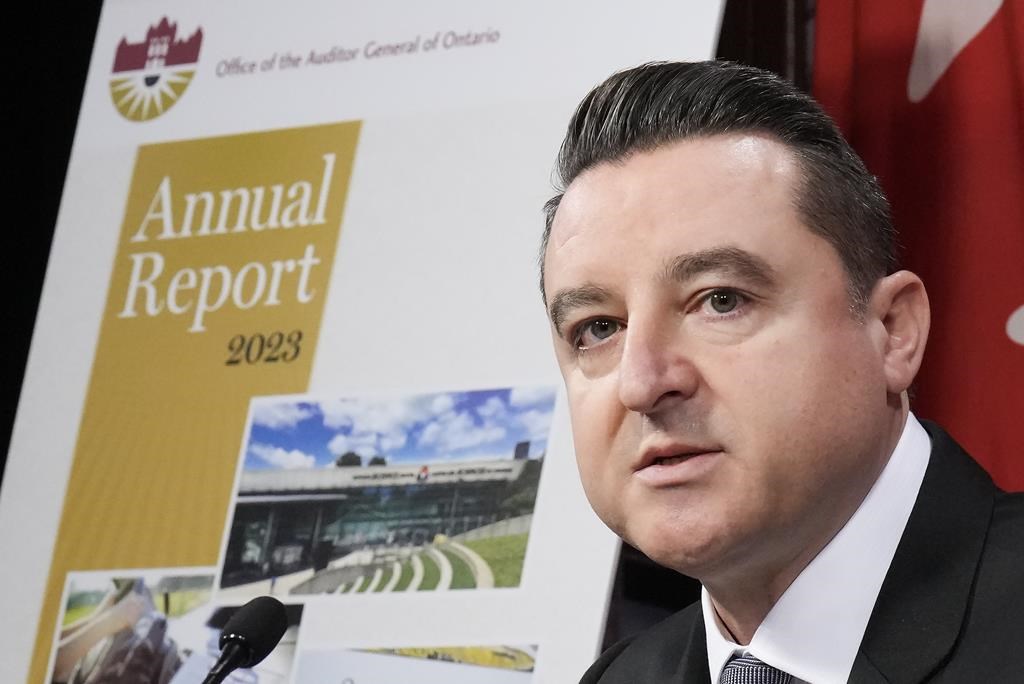At least 99 hospital patients in Ontario have been placed in long-term care homes without their consent, the province’s auditor general has found.

Opposition politicians and seniors’ advocates have roundly criticized a law the Progressive Conservative government enacted last year to enable those moves, which can see those patients placed in homes up to 70 kilometres away, or 150 kilometres if they are in northern Ontario.
The annual report from the auditor general’s office this week said the government has not been transparent in implementing the law. It allows hospital placement co-ordinators to transfer those patients to a home not of their choosing, and can see them charged $400 a day if they refuse.
The law is aimed at moving so-called alternate level of care patients, who can be discharged from hospital but need a long-term care bed and don’t yet have one, in order to free up hospital space.
The auditor general analyzed the placements of 7,357 alternate level of care patients between the law taking effect in September 2022 and March 31 of this year, and found that about 40 per cent were placed in their first-choice home.

Get weekly health news
About 60 per cent were placed in a home the patient had ranked lower on their list, a comparable percentage to before the new law was introduced, the auditor said.
But 99 patients were placed in homes that were selected by placement co-ordinators without the patient’s consent, the report said.
“Despite the public’s concerns over the new legislation, none of this information has been disclosed to the public to show when and how the new provisions were used,” acting auditor general Nick Stavropoulos wrote in the report.
Further, the Ministry of Long-Term Care does not know how many patients — if any — have been charged since the law came into effect last year, because neither they, nor the Ministry of Health, nor Ontario Health, are tracking that, the auditor said.
NDP long-term care critic Wayne Gates said he wouldn’t be surprised if no one has been charged the fees.
“I think there’s so much of a threat of the $400 it intimidates families,” he said. “I’m going to be honest, how many families can afford $400 a day?”
Green Party Leader Mike Schreiner said since the auditor’s analysis ended in March, the actual number of patients placed without their consent could be “substantially” higher.
He said he is also concerned by the auditor’s finding that the ministry is not monitoring outcomes of the alternate level of care patients once they are in long-term care.
“Given how controversial this bill is, and how disruptive a non-consensual placement would be for individuals themselves, their loved ones and caregivers, I just find it completely unacceptable that the ministry has failed to monitor those outcomes,” he said.
“I know in my case, I have had some constituents reach out who have had non-consensual placements and it’s been very disruptive for their family, for their caregivers, for the individuals themselves.”
The auditor also said that the number of people admitted to long-term care homes with a particular emphasis on serving a certain cultural community has been declining, and the law could further exacerbate the issue.
Nicholas Tibollo, a spokesperson for Minister of Long-Term Care Stan Cho, said the co-ordinators must follow legislative requirements and a field guidance document in making placements.
“Placement coordinators must make reasonable efforts to obtain consent from the ALC patient or their substitute decision-maker,” he wrote in a statement.
“The Act’s legislative provisions do not authorize the physical transfer of an ALC patient to a long-term care home without consent.”







Comments